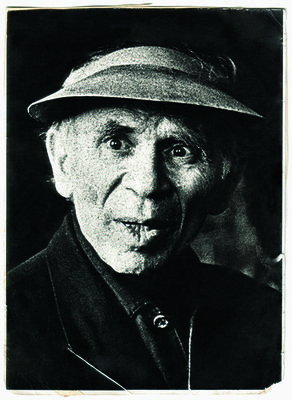In Moscow, 104, died painter Moses Feigin, the last member of the legendary avant-garde group "Jack of Diamonds." In the spring of 2007 in the Central House of Artists, Moscow was an exhibition "103 years of artistic feat Moses Feigin": picture shown then he wrote after his 100th birthday, but violinists, acrobats and other comedians involved in a worldwide masquerade, they started doing acrobatics tricks in a daring expressionist spirit that immediately think of her reckless libertines avant-garde of the 1920s. This creative longevity impressed even the drafters of the Guinness World Records: after that, as it turned out, his last exhibition Moses Feigin was listed in its database as the oldest working professional artist.
Moses Feigin in the new millennium impression of a man who had just from 1920. In an interview he said that Kazimir Malevich and Pavel Filonov – geniuses, and Vasily Kandinsky – so corny decorator that the Russian avant-garde avant-garde than "fat "bourgeois Europe, and it seemed as if this fiery monologue pronounced in some VHUTEMAS workshop for glass of boiling water and a loaf of bread as a revolutionary – petrov- vodkin miseenscenes.
In the 1920s, he studied at the VHUTEMAS's true: Petr Konchalovsky, Ilya Mashkov, Aristarchus Lentulov and most revered Alexander Osmerkin and Lyubov Popova – Feigin prevailed among teachers and members of the exponent "Jack of Diamonds", so that he soon became the last member of the first Russian avant-garde artists association (or rather, the legal successor of "Jack of Diamonds" – the Society of Moscow Artists). From Osmerkin been vaccinated Cezannism from Popova – a passion for abstraction and the search for a new language, but from the general atmosphere of the 1920s brought the conviction that "art is growing in the struggle" and the avant-garde – a position not only artistic but also moral.
Like many who are in the Soviet binding VHUTEMAS, Moses Feigin had to lead a double life: one for himself, "the table," write postsezannistskie aerial landscapes, gloomy abstraction, surreal scenes with carnivals and evangelical motives for earnings – portraits of the leaders. This careless he treated with irony. He recalled how a four-canvas with a head of Stalin for a house on the waterfront Tinkers daub almost blind: the entire canvas spread on the ground, you could see, only rising to the 29th floor was still unfinished high-rises, and with no lift on a top bunk does not run over. However, in special cases, this forced cynicism gave way to heroism: he is the only Osmerkinskih students appeared for public defamation of a teacher in the Central House of Artists, to openly support him – this act of Moses Feigin to the end regarded as one of the most important of his creative achievements.


